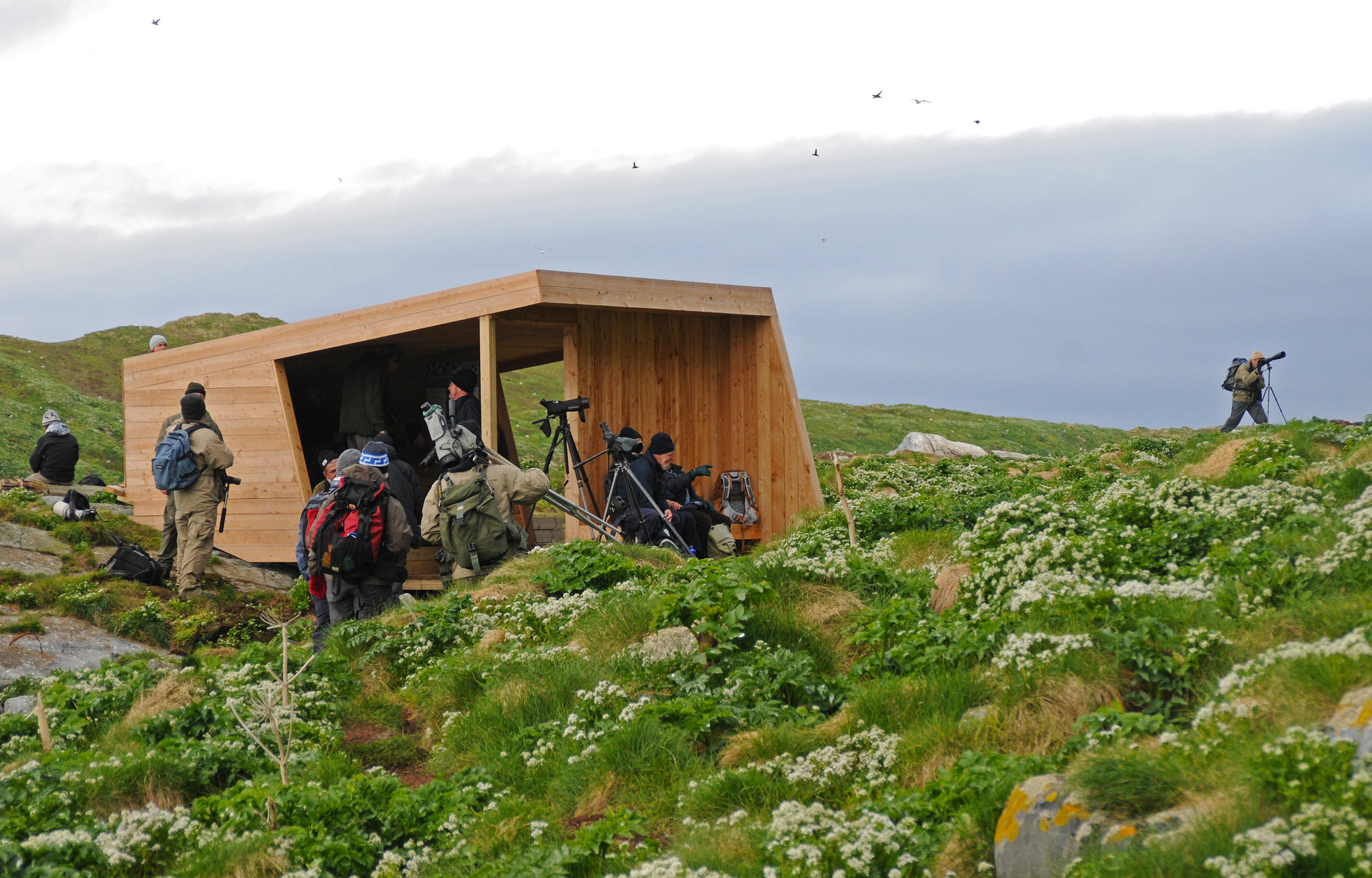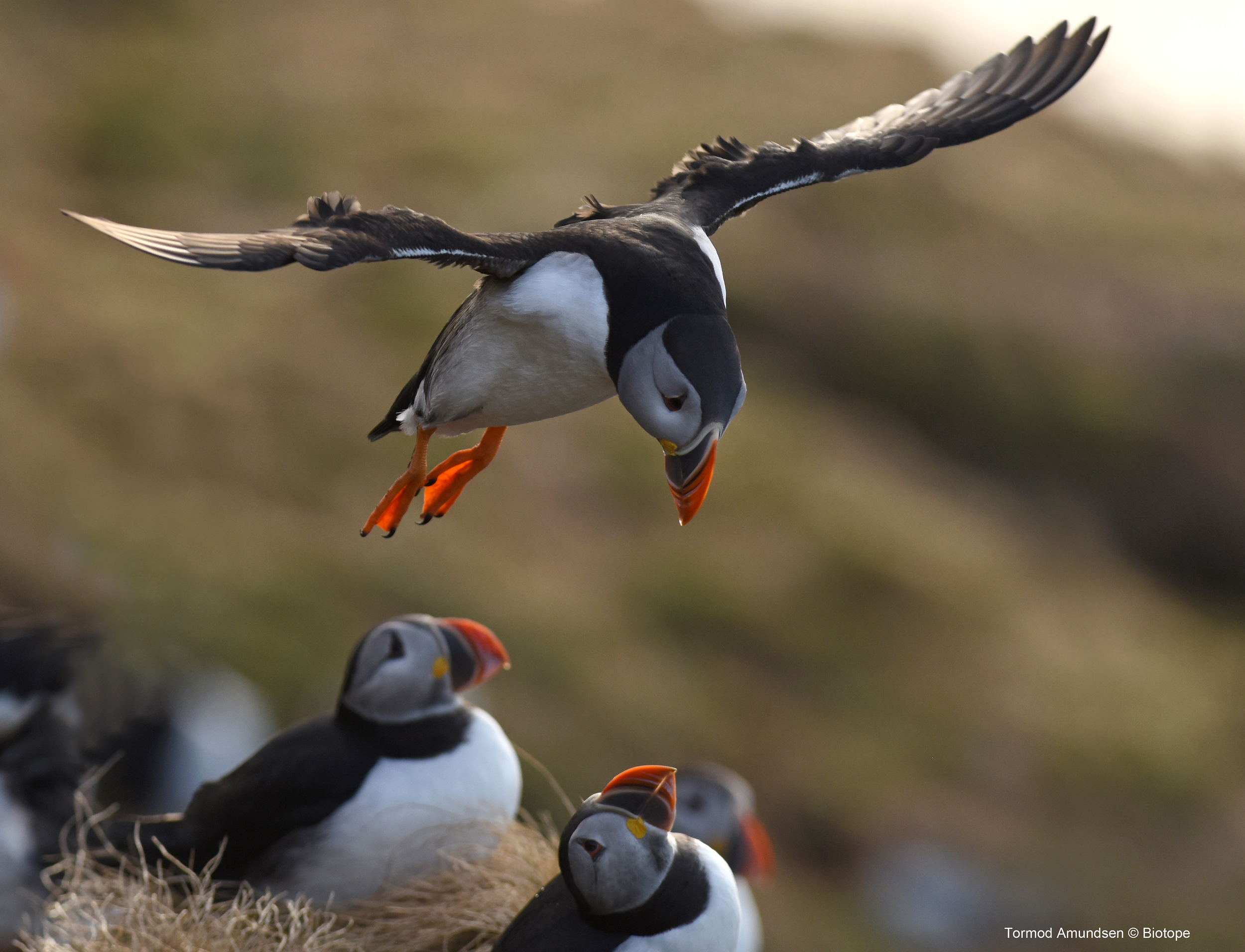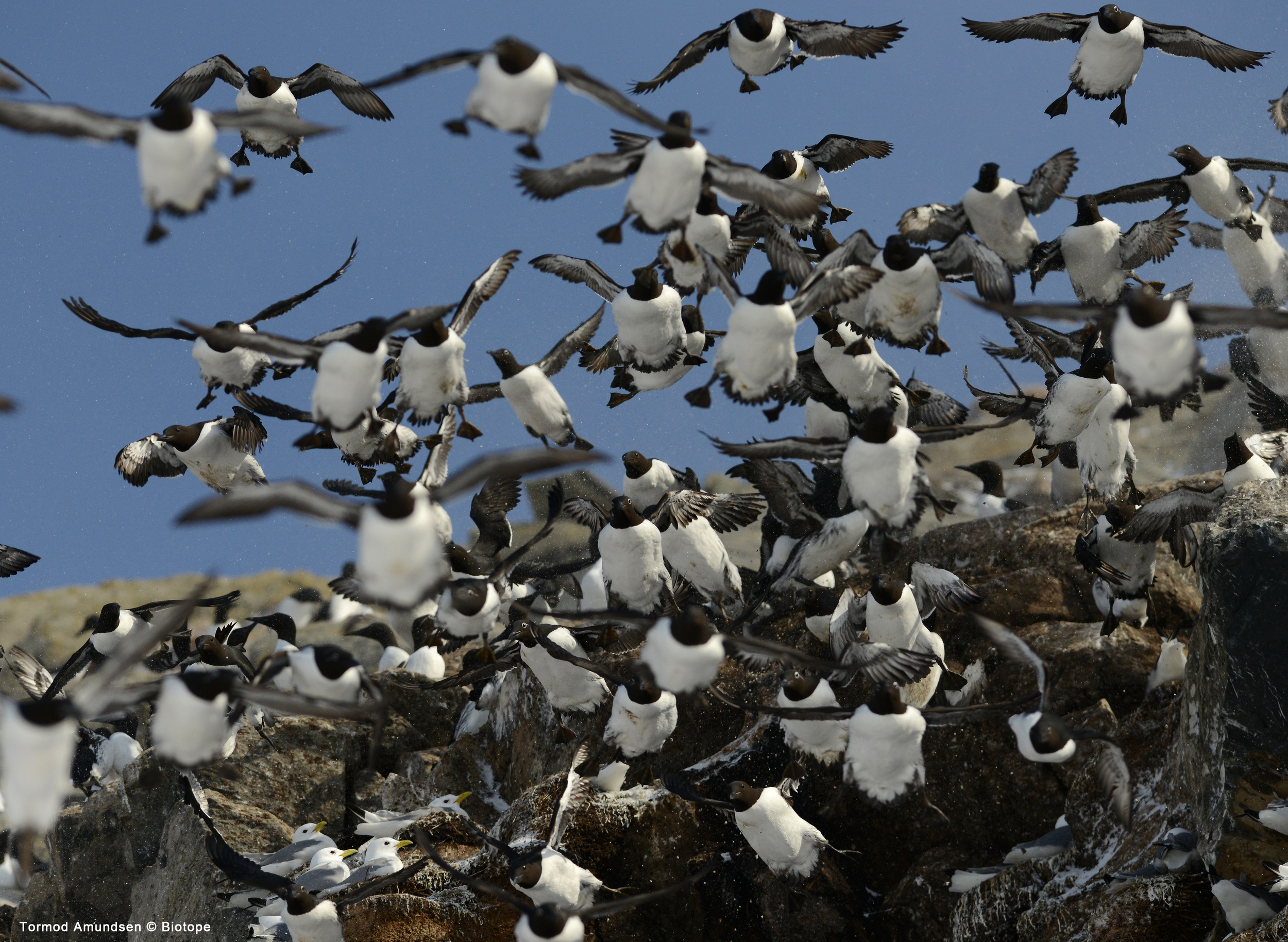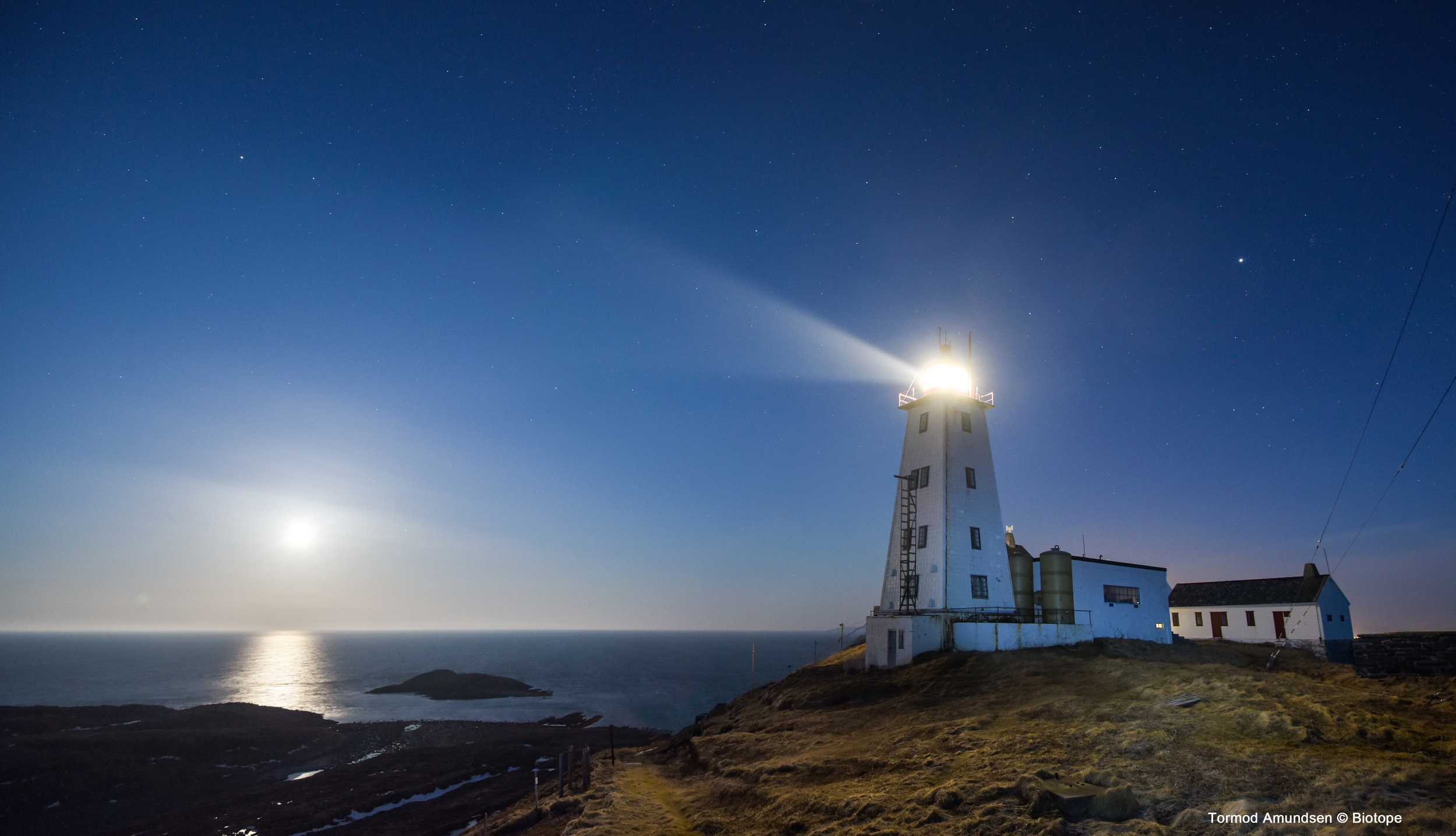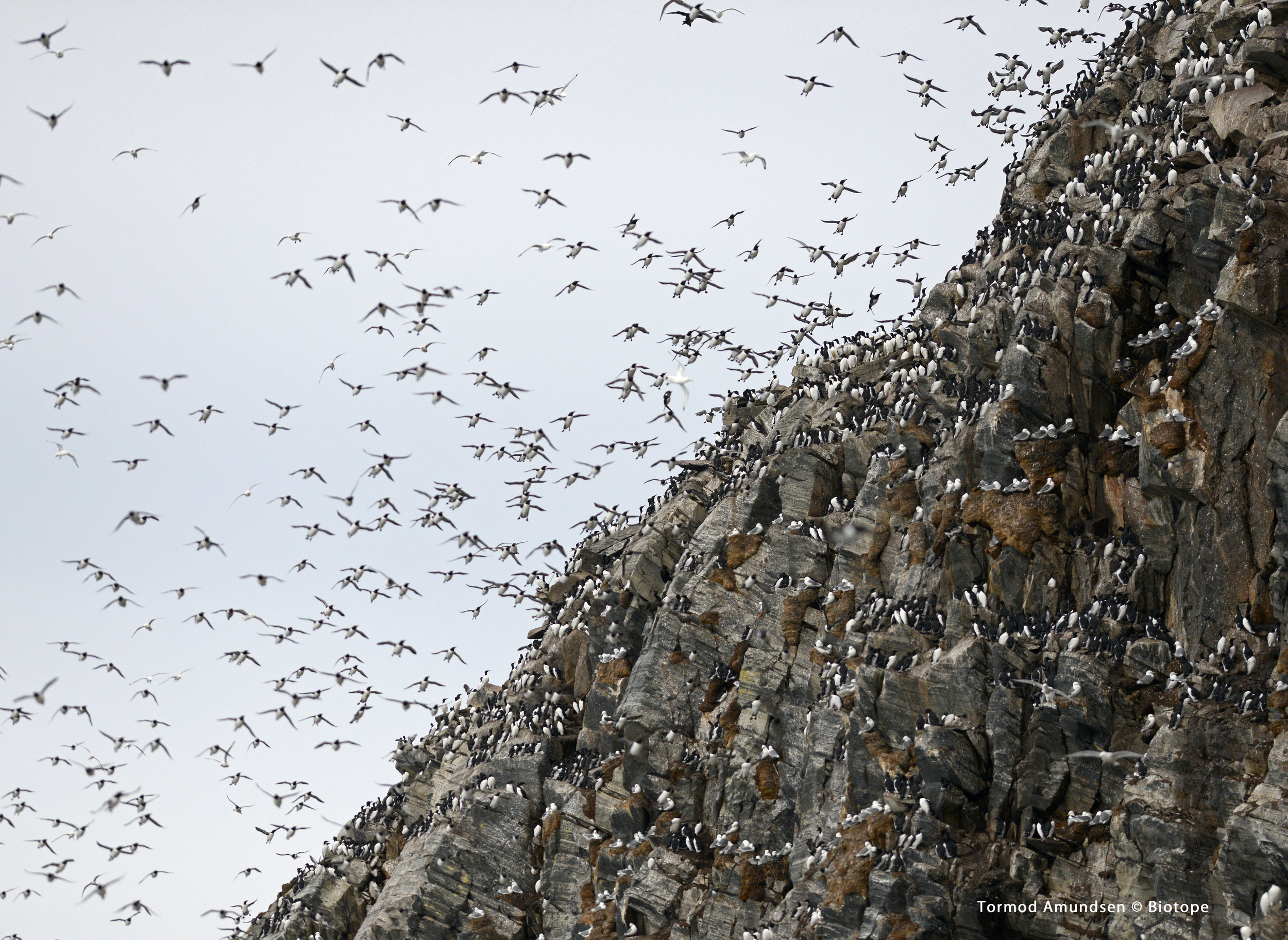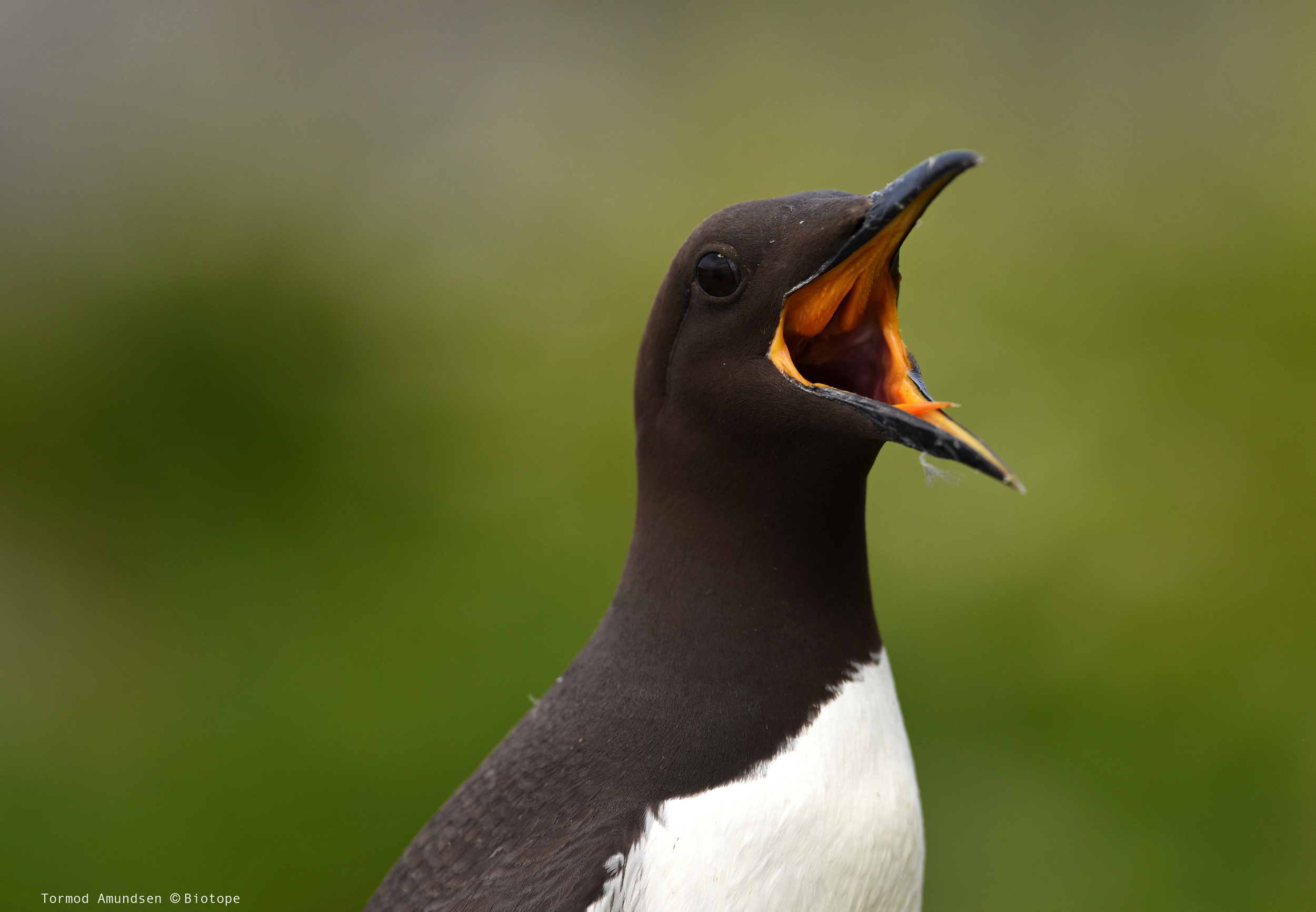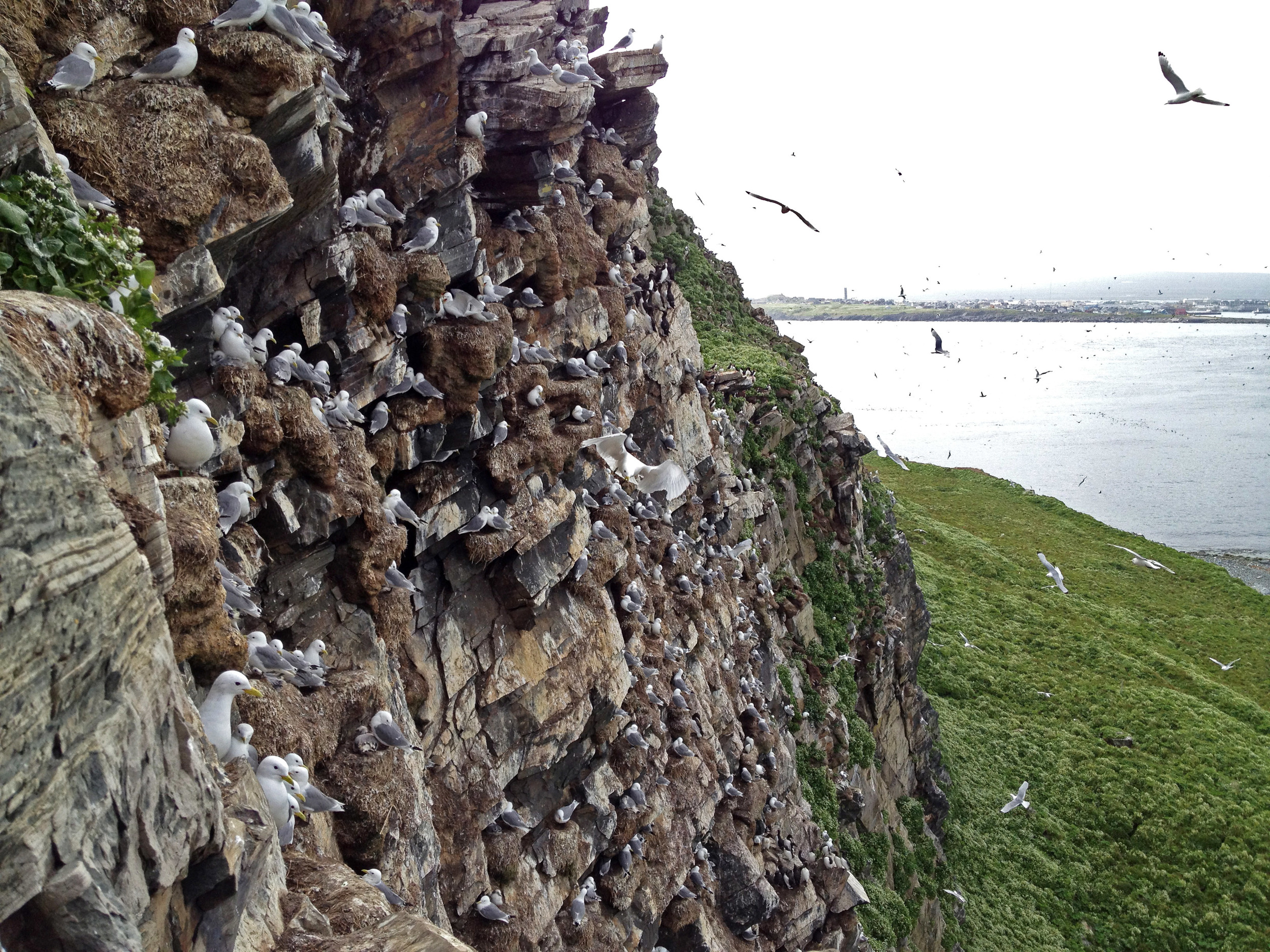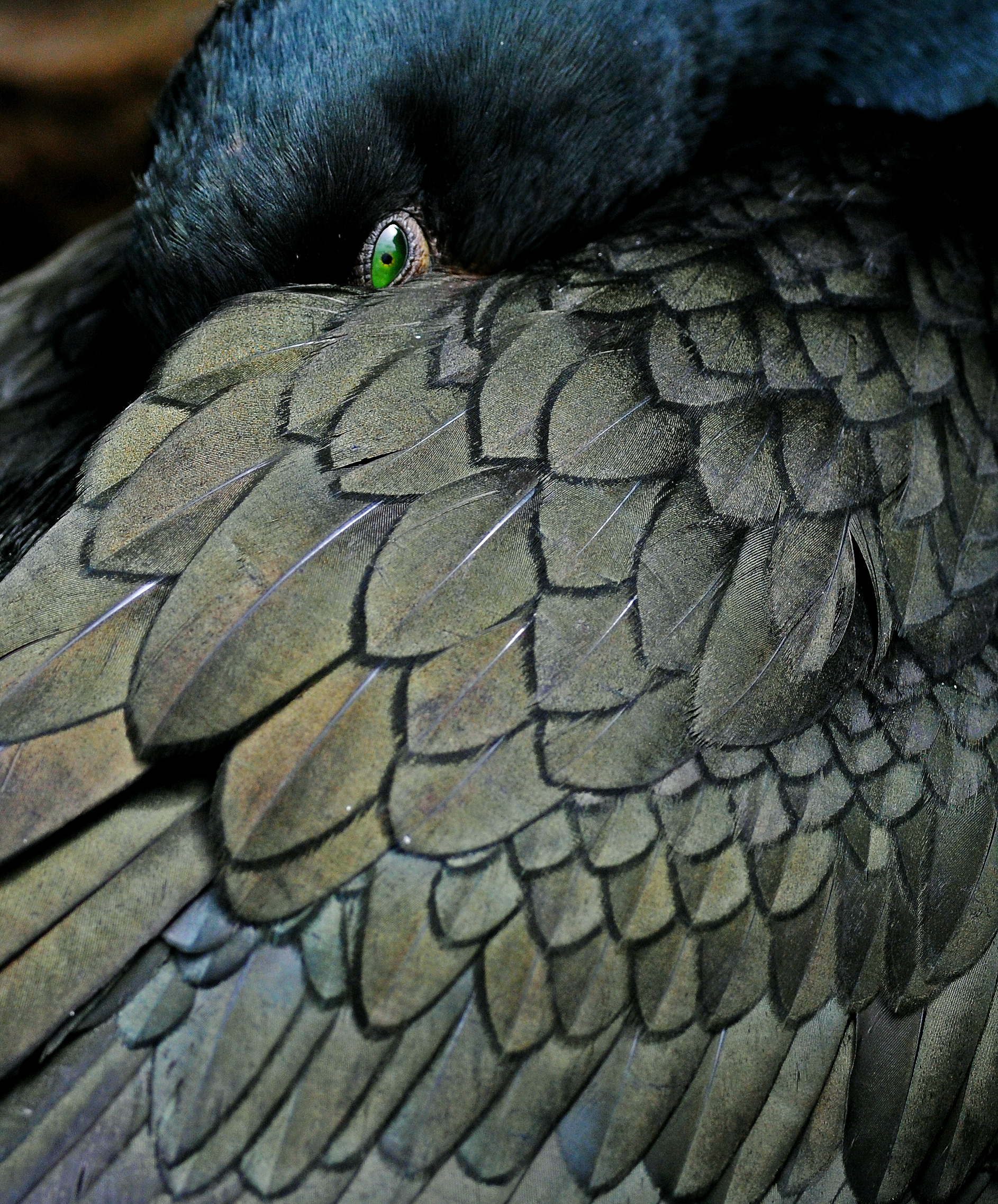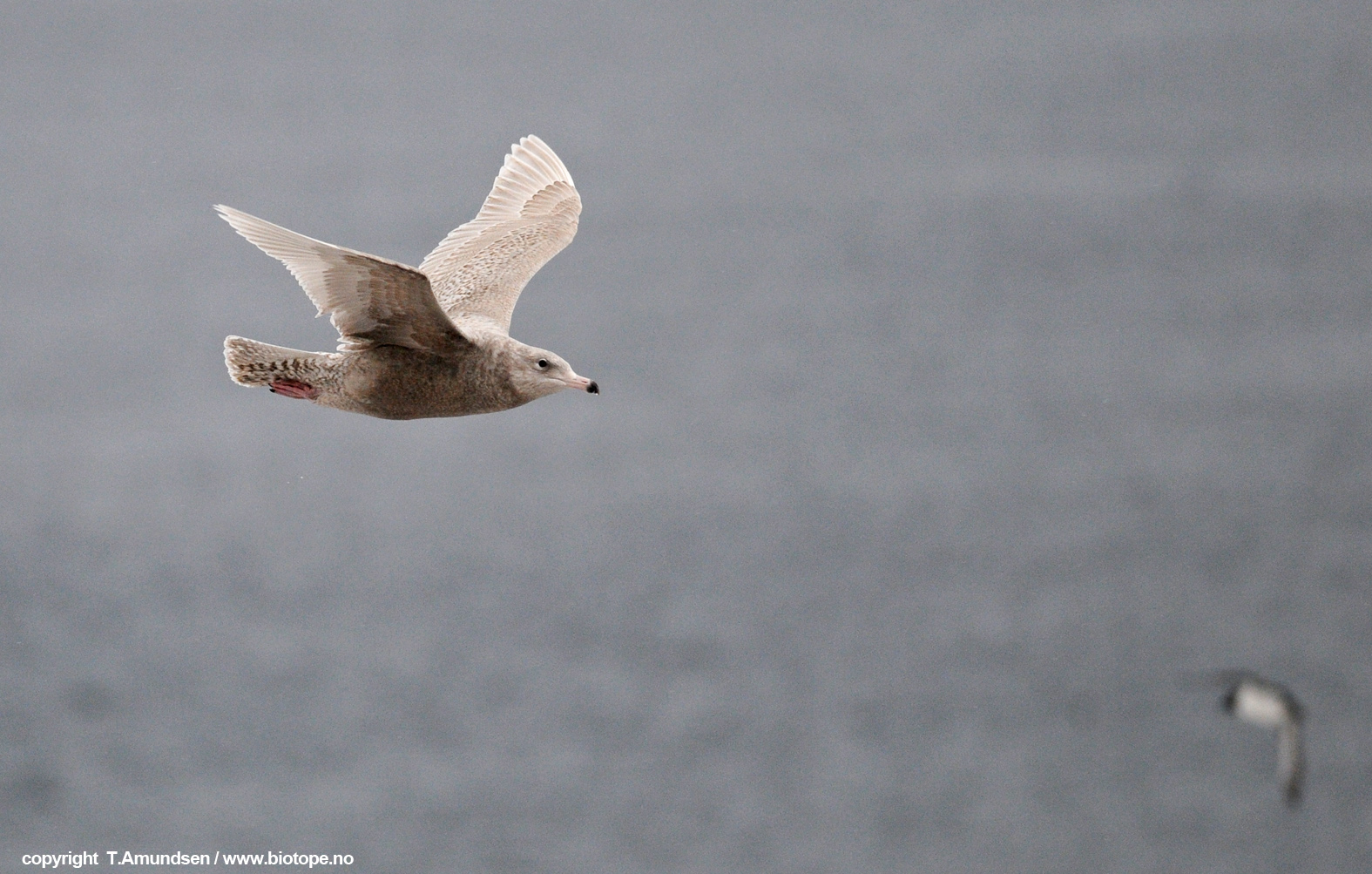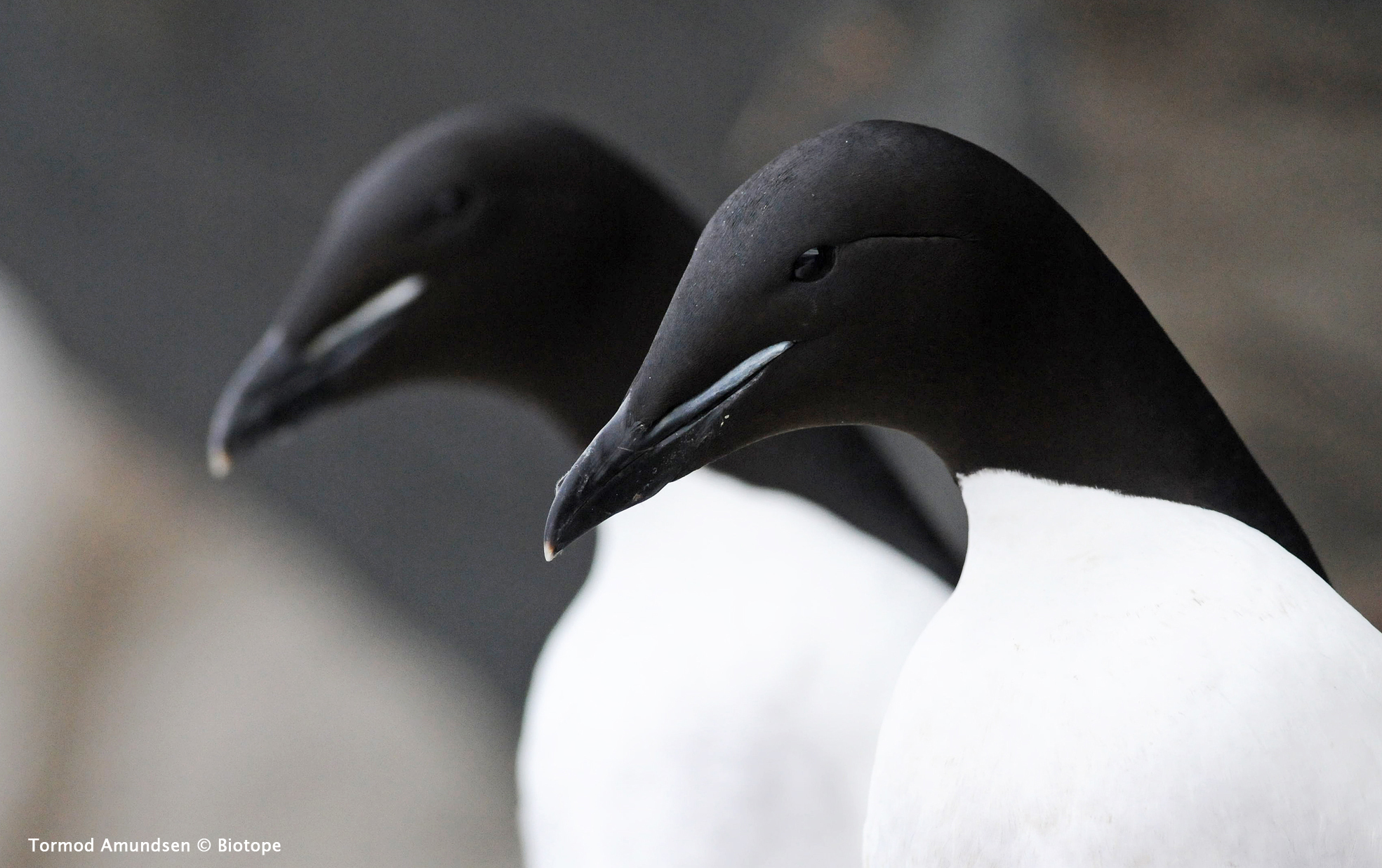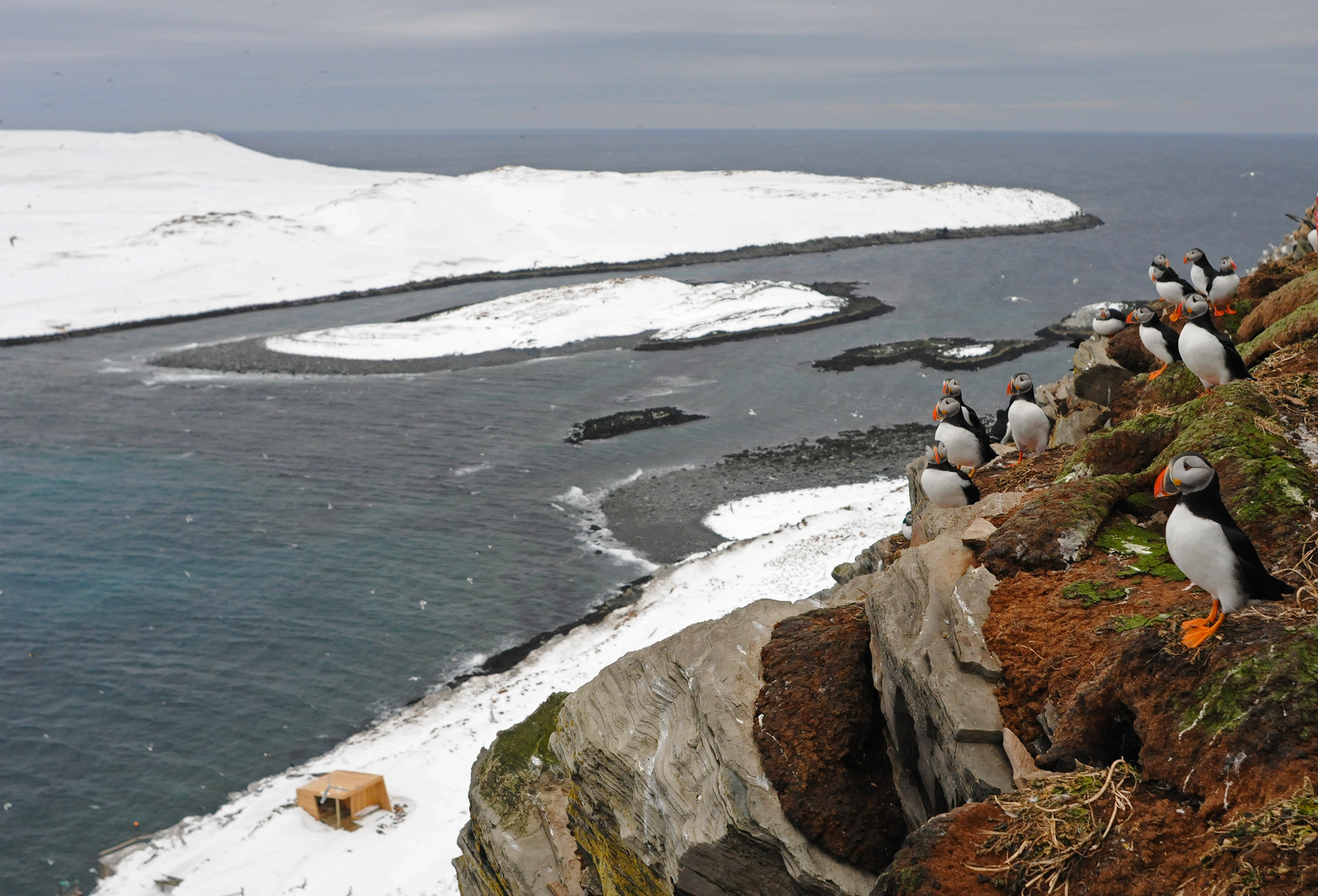Hornøya is the easternmost point in Norway; a 0.4 sq.km island surrounded by the vast expanse of the Barents Sea. Hammered by winter storms and bathed under the summer’s midnight sun, it is one of the most extreme places in northern Norway. The island has long fascinated scores of polar explorers, scientists and wildlife watchers, while the lighthouse has provided a lifeline for generations of Arctic sailors. Though it has a rich history, Hornøya is probably most famous its colony of 80 000 seabirds, including 7 800 pairs of Puffins and c.500 pairs of the scarce Brünnich’s Guillemot. Visiting Hornøya is a lesson in true wilderness, yet one that is so easily accessible from one of the world’s most northerly civilised areas.
The nature reserve
Hornøya, and the neighbouring island of Reinøya, were designated as a Nature Reserve in 1983 to protect the nationally important numbers of birds nesting there. An estimated 80 000 seabirds make Hornøya their home in the summer. Between them, the islands hold one of the largest gull colonies in Europe.
Historically, it was only the king (who lived at the Vardø fortress) and his army who could land on Reinøya to collect the cloudberries and gulls’ eggs. Reinøya is now closed to the public and only the local nature wardens have access to the island.
Hornøya is open to the public but due to its status as a Nature Reserve, visitors must stay within the designated areas during the breeding season and it is forbidden to pick plants or interfere with the wildlife of the island.
Map showing the extent of the Reinøya / Hornøya Nature Reserve (outlined in green).
Research & Seabird Science
Each summer, a small number of seabird scientists are resident on Hornøya, studying the bird populations. Since 1980 they have counted the numbers of bird species annually in coordination with the national SEAPOP programme. This diligent monitoring has allowed the population trends of several different species to be mapped. For example, we now know that since 1980, the breeding populations of Herring Gull and Great Black-backed Gull have declined, though not as drastically as the numbers of Kittiwakes, which have almost halved during the same time frame.
The counts have also shown the incredible fluctuations in the Common Guillemot population over the years. Between 1986 - 1987, Hornøya’s guillemot numbers crashed catastrophically and 90% of the population was lost. This was followed by an incredible comeback, and now the guillemot population is higher than it was before the collapse. This trend goes against all the other seabird colonies in Norway, where guillemots have been declining for decades.
Part of the monitoring includes ringing many of the birds. This involves catching and affixing a tiny metal ring to the bird’s leg. Each ring has a unique code, so that if the bird is caught again, or if it dies and the ring is found, individual birds can be recognised. This gives an idea about how far a bird has moved and how long it has lived. Sometimes coloured rings or rings with large letters are also used so that the bird can be identified without having to be caught again. If you manage to read these rings or see combinations of colour rings on birds, please note them down and submit your sighting to EURING.
GPS trackers have also been fitted to some seabirds. This allows the scientists to map how far away the breeding birds travel to feed. Some trackers also measure how deep birds dive underwater for fish. For example, trackers have shown that Persfjord, to the north of Hornøya, is an important fishing area for guillemots which breed on the island.
A Common Guillemot with colour rings

